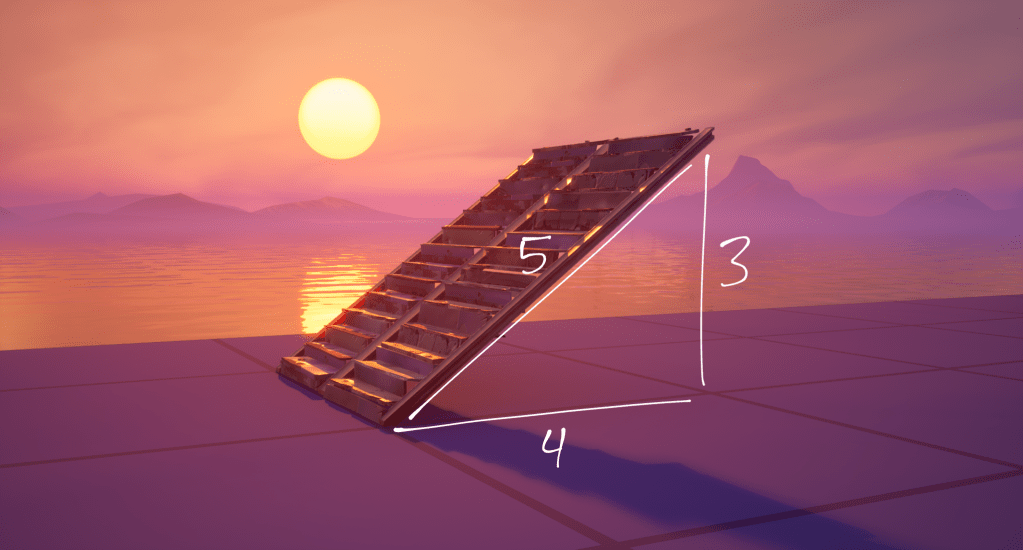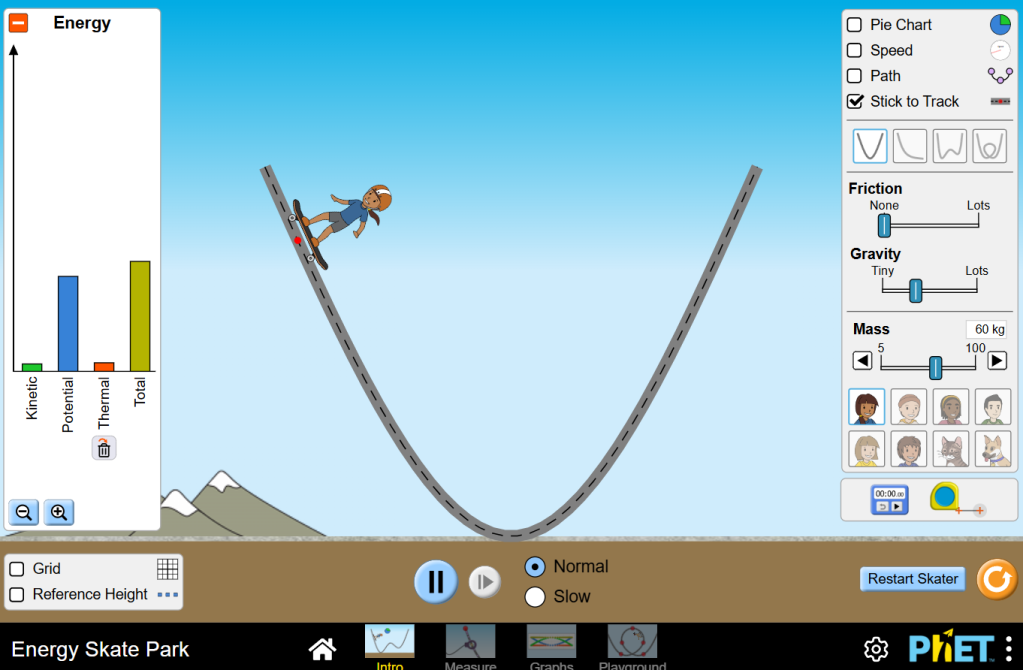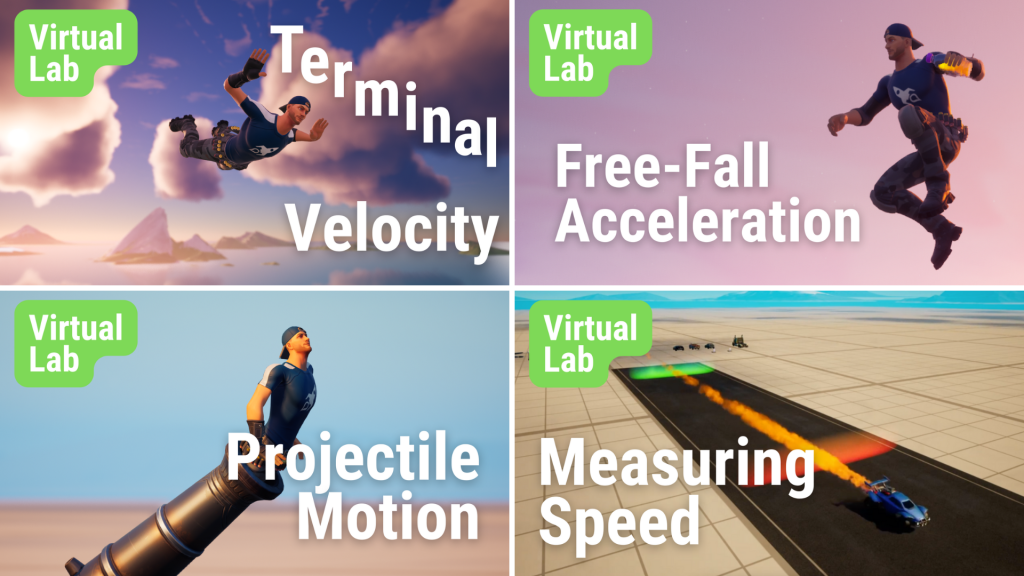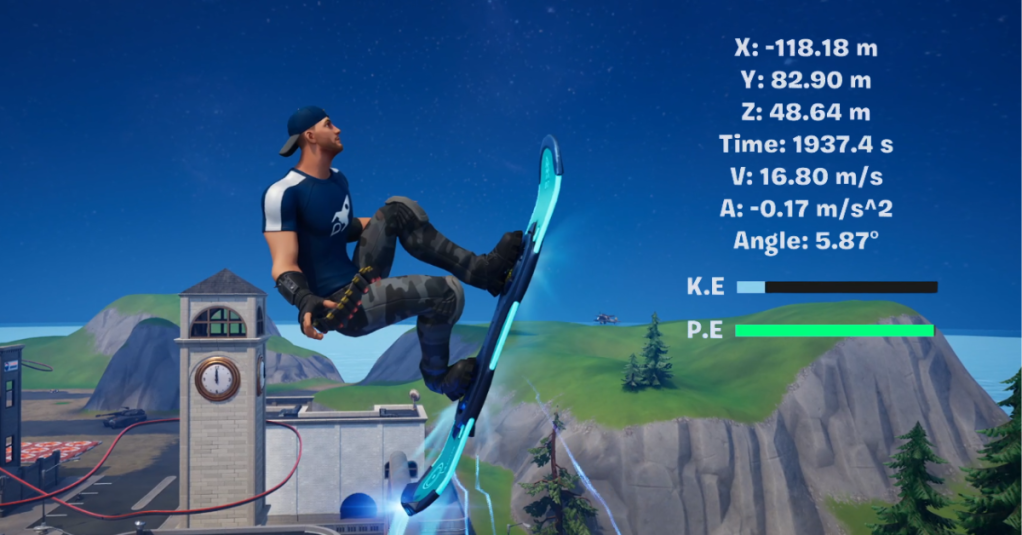Fortnite as a Science Laboratory
This physics toolkit contains ready-to-use curriculum to integrate Fortnite into high school physics, showing the promise of virtual learning spaces.
Your content has been saved!
Go to My Saved Content.As a physics professor and gamer, I’m always on the lookout for amazing science hidden in popular video games. When I started playing Fortnite in 2018, a small mathematical detail caught my attention. The in-game ramps that players build (part of the “forts” in “Fortnite”) are precisely 5.12 m deep, 3.84 m high, and 6.40 m long—a 3-4-5 Pythagorean triple scaled by 128 cm.

This small discovery sparked a deep dive for me into the physics of Fortnite and sent me on a years-long quest to turn Fortnite into a tool for science education. The culmination of this discovery and exploration is an immersive Fortnite Physics Laboratory, built and published using the powerful Fortnite Creative Toolset. This interactive laboratory and its associated curriculum is available today and can be used to demonstrate and explore a variety of physical science concepts such as speed, acceleration, free fall, and more. For non-science teachers, our experiment serves as a proof of concept for what virtual learning experiences could look like in the future, where students enter virtual spaces to learn in new engaging ways.
Video Games Make Awesome Laboratories
We know that computer simulations are powerful tools for science education, allowing students to interact with scientific concepts in ways that are difficult to replicate in the classroom. The PhET Interactives from UC Boulder include over 100 simulations backed by decades of research showing their effectiveness in promoting conceptual understanding.

Take PhET’s Energy Skate Park interactive, for example, which is a free online interactive simulation and associated curriculum. Educators use PhET simulations like this one to introduce concepts and visualize ideas that are hard to see in the real world. In the case of the Energy Skate Park, students can use a virtual skateboard ramp to explore the conservation of energy and its relationship to friction.
Video games are, in many ways, sophisticated computer simulations. They are often built using powerful 3D game engines that simulate the natural world. As a result, video games can power a new generation of immersive 3D educational simulations—open-world virtual laboratories where students can bend the laws of reality, design and enter into life-sized experiments, and travel back in time to re-create famous experiments from history.
We’ve used Fortnite to create a virtual laboratory where students can race cars and alien spaceships to see which is faster, launch themselves out of a cannon to verify the laws of projectile motion, or monitor their velocity while skydiving to measure the effects of air resistance—exploring key concepts from physical science using experiments that could never be done in a real-world classroom laboratory.
Why Fortnite?
Fortnite is one of the most popular games in the world, with millions of active users. It’s also incredibly accessible, playable for free on almost any device, from gaming consoles to smartphones. This makes it an ideal platform for educators looking to engage students where they already are. But what makes Fortnite truly special is its built-in creative tools—specifically Fortnite Creative, the island creation mode.
Fortnite Creative offers immense educational potential, similar to Minecraft but with more advanced graphics and tools. Players can design, modify, and interact with custom-built worlds. Replay mode transforms the game into a virtual production studio, enabling storytelling projects far beyond science. For example, check out this Olympics-inspired opening ceremony that students created with Fortnite Creative and Replays.
It’s natural for teachers to be concerned about the violence typically associated with Fortnite’s Battle Royale mode. However, Fortnite Creative allows the user to fully customize the experience. The islands we create for educational purposes contain no combat, violence, or weapons—instead, they are designed specifically to foster exploration, learning, and discovery.
The Fortnite Virtual Laboratory Curriculum
With the support of a MegaGrant from Epic Games, I developed a set of five virtual labs demonstrating fundamental physics principles in Fortnite. Each lab includes an introductory video, written instructions, and a data collection sheet. Even without direct access to Fortnite, students can complete these activities using prerecorded data collection videos.
The virtual labs we’ve created are ready for use, and all the necessary materials—including worksheets, videos, and guides—are freely accessible. Here are some examples.

- Measuring speed: Students use an in-game photogate to directly measure the speed of vehicles, from shopping carts to fantastical flying machines.
- Free-fall acceleration: Students drop objects from a Fortnite clock tower and use an in-game timer to measure acceleration due to gravity. The surprising result? Gravity in the Fortnite universe is set to 26 m/s²—much stronger than Earth’s gravity, which opens up opportunities for rich classroom discussion.
- Projectile motion and terminal velocity: By launching characters or vehicles through the air, students can observe projectile paths and understand the forces involved in free fall and terminal velocity.
Each lab invites students to collect data, perform analysis, and draw conclusions about the trade-offs that game designers face as they seek to balance realistic physics with fun gameplay. This is a powerful reminder for students of the importance of math and science in high-interest careers like game design.
The Fortnite Physics Laboratory
The Fortnite Virtual Labs provide ready-made experiments for students to complete in a single class period.
If you want more space for experimentation, we also created the open-world Fortnite Physics Laboratory, a virtual playground where students can design their own life-sized experiments and track the player’s position, velocity, acceleration, and energy data.

In this environment, students drive cars, ride hoverboards, and fly airplanes while collecting and graphing physics data directly in the game. Handheld remotes allow students to reset timers and customize experiments, fostering creativity and scientific engagement.
The Fortnite Physics Laboratory empowers students to think like scientists—designing experiments, collecting real-time data, and analyzing it for classroom discussion. This open-world lab is perfect for science fairs or projects where students can explore topics that interest them in greater depth. Watch the video below for an introduction to the open-world island.
Fortnite offers additional educational resources, from creative writing projects to lesson plans on sustainability and global challenges. Visit the Fortnite Education homepage to learn more.
